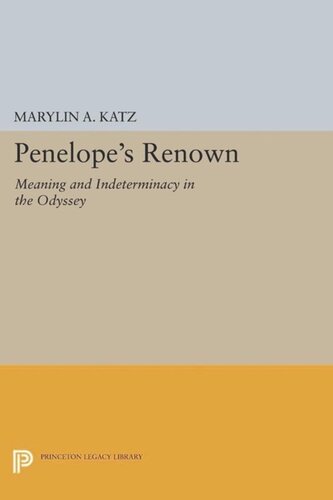

Most ebook files are in PDF format, so you can easily read them using various software such as Foxit Reader or directly on the Google Chrome browser.
Some ebook files are released by publishers in other formats such as .awz, .mobi, .epub, .fb2, etc. You may need to install specific software to read these formats on mobile/PC, such as Calibre.
Please read the tutorial at this link: https://ebookbell.com/faq
We offer FREE conversion to the popular formats you request; however, this may take some time. Therefore, right after payment, please email us, and we will try to provide the service as quickly as possible.
For some exceptional file formats or broken links (if any), please refrain from opening any disputes. Instead, email us first, and we will try to assist within a maximum of 6 hours.
EbookBell Team

5.0
30 reviewsNoted for her contradictory words and actions, Penelope has been a problematic character for critics of the Odyssey, many of whom turn to psychological explanations to account for her behavior. In a fresh approach to the problem, Marylin Katz links Penelope closely with the strategies that govern the overall design of the narrative. By examining its apparent inconsistencies and its deferral of truth and closure, she shows how Penelope represents the indeterminacy that is characteristic of the narrative as a whole. Katz argues that the controlling narrative device of the poem is the paradigm of Agamemnon's fateful return from the Trojan War, narrated in the opening lines of the Odyssey. This story operates not only as a point of reference for Odysseus' homecoming but also as an alternative plot, and the danger that Penelope will betray Odysseus as Clytemnestra did Agamemnon is kept alive throughout the first half of the poem. Once Odysseus reaches Ithaca, however, the paradigm of Helen's faithlessness substitutes for that of Clytemnestra. The narrative structure of the Odyssey is thus based upon an intratextual revision of its own paradigm, through which the surface meaning of Penelope's words and actions is undermined though never openly discredited.
Originally published in 1991.
The Princeton Legacy Library uses the latest print-on-demand technology to again make available previously out-of-print books from the distinguished backlist of Princeton University Press. These editions preserve the original texts of these important books while presenting them in durable paperback and hardcover editions. The goal of the Princeton Legacy Library is to vastly increase access to the rich scholarly heritage found in the thousands of books published by Princeton University Press since its founding in 1905.